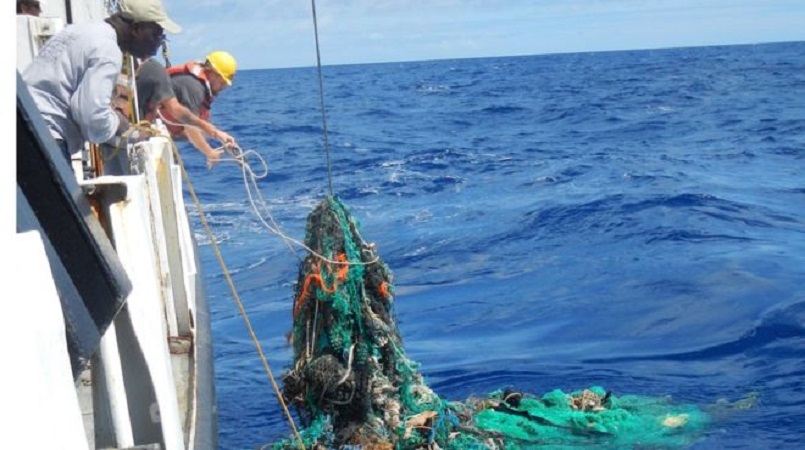
A collection of plastic afloat in the Pacific Ocean is growing rapidly, according to a new scientific estimate.
Predictions suggest a build-up of about 80,000 tonnes of plastic in the "Great Pacific Garbage Patch" between California and Hawaii.
This figure is up to sixteen times higher than previously reported, say international researchers.
One trawl in the centre of the patch had the highest concentration of plastic ever recorded.
"Plastic concentration is increasing - I think the situation is getting worse," said Laurent Lebreton of The Ocean Cleanup Foundation in Delft, Netherlands, which led the study.
"This really highlights the urgency to take action in stopping the in-flow of plastic into the ocean and also taking measures to clean up the existing mess."
Waste accumulates in five ocean areas, the largest being the patch located between Hawaii and California.
The researchers used boats and planes to map this area of the North Pacific, where rotating currents and winds cause marine debris, including plastic, seaweed and plankton, to converge.
The three-year mapping effort showed that plastic pollution is "increasing exponentially and at a faster rate than in the surrounding water", said the international team.
Microplastics accounted for 8% of the total mass of plastic afloat within an area of 1.6 million square km.
Of the estimated 1.8 trillion bits of plastic, some were larger than microplastics, including fishing nets, toys, and even a toilet seat.
Erik van Sebille of Utrecht University in the Netherlands, who is not connected with the study, said the amount of plastic discovered was "staggering".
"While their estimates come with large uncertainty ranges, they do report a staggering amount of plastic," he said.
"And they also discovered that the Garbage Patch is moving around much more than anyone expected."
Photo by The Ocean Cleanup
